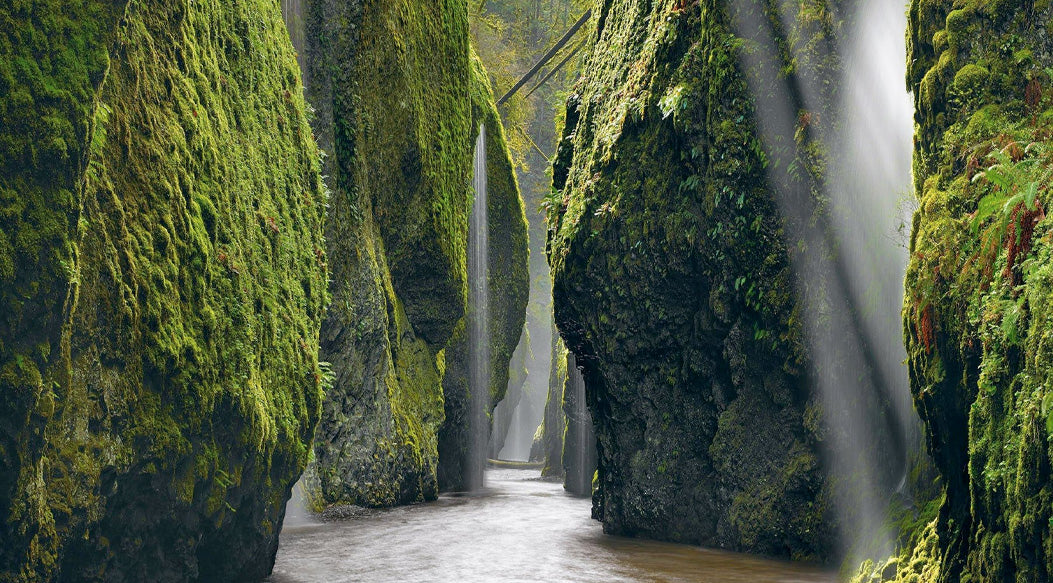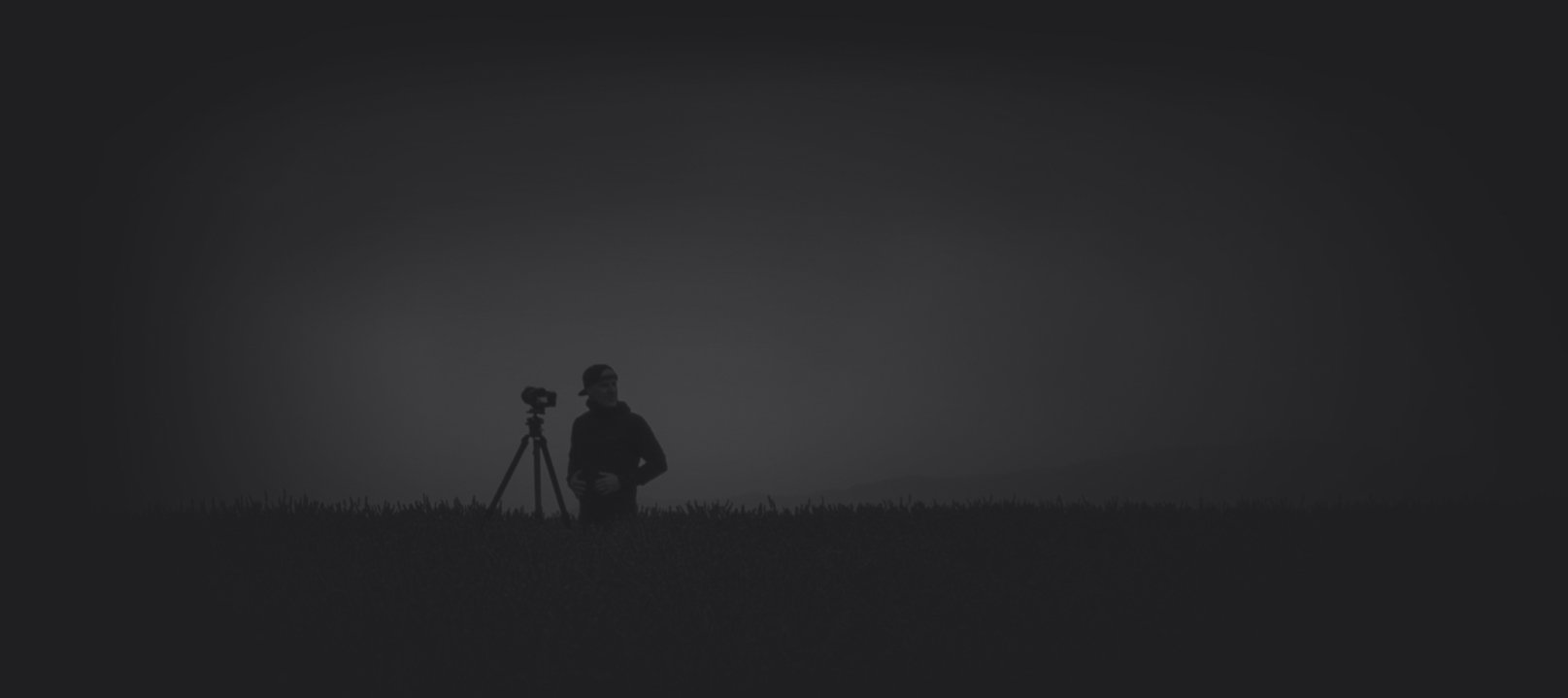Summary:
Explore landscape photography with Peter Lik, diving into its definition, evolution, and impact. Discover composition, lighting, and emotion as key elements. Learn about various types of landscape photography, from panoramas to abstracts. Lik's influence revolutionizes the art form, inspiring creativity and appreciation for nature.
Embark on a journey through the captivating world of landscape photography, where nature's grandeur meets the creative eye.
This art form, championed by notable artists and photographers like Peter Lik, invites us to explore and appreciate the stunning beauty that our world has to offer, one snapshot at a time. What is landscape photography, and what does it take to become a master landscape photographer?
In this blog, we’ll help art collectors understand the complex elements of an effective landscape photo composition. Read on to unpack the technical skill, thought, and vision behind your favorite images of the natural and man-made world. When you’re done, you’ll be prepared to choose a majestic landscape photo to transform your space and change the way you see the world around you.
What is landscape photography?
Landscape photography definition
Landscape photography, in its purest form, is the art of capturing pictures of nature and the outdoors in a way that makes the scene feel meaningful for the viewer. From the grandiose vista to the minute details, it's about showcasing the beauty and splendor of our world.
Landscape photography: then and now
Landscapes have always been a source of inspiration for humankind, as landscape painting predates the creation of the photograph. People are naturally captivated by the dynamic world around them, which shifts with time and the seasons. As a result, even images of locations that seem static and unchanging come with a sense of captivating ephemerality. The desire to capture a landscape is the desire to capture the world at a given moment in time.
With that in mind, landscape photography has existed since cameras became commercially available, with the first landscape photos appearing in the mid-1800s. This technology provided a way to distill a moment that was challenging to do with paint and a canvas. Suddenly, landscapes were filled with a sense of vitality and spontaneity, unlike the curated landscape paintings that were popular in the past.
Likewise, landscapes were easier for early cameras, which had longer exposure times. While people and animals could move during a portrait sitting, mountain ranges and forests typically did not. Thus, many of the first artistic photographs featured images of the natural world.
Photographers like William Henry Fox Talbot developed techniques to produce beautifully detailed black-and-white images of sweeping meadows and forests. Likewise, 20th-century landscape photographer Ansel Adams is a household name. These pioneers helped set the stage for contemporary fine art photographers, who use new technologies and techniques to capture and distill the world around them.
These days, everyone has a camera in their hands at all times, and the world has never been more accessible. As a result, landscape photography is an incredibly popular art form with both professionals and amateurs alike. It’s been embraced by photographers in both digital and film formats, allowing them to capture views in either format.
From award-winning photographer Peter Lik, Lik Fine Art offers a deep dive into the art of landscape photography.
With images ranging from the rugged mountains to vivid cityscapes, Peter offers a unique perspective on the world around us.
View Peter Lik's award-winning photography
What defines a landscape photograph?
Capturing a landscape is not just about pointing your camera at a pretty scene and pressing the shutter button. Several key elements define true landscape fine art photography:
Composition
First and foremost, a great landscape photograph requires a strong composition. A well-composed photograph will lead the viewer's eye through the image, using elements such as leading lines, framing, and the rule of thirds.
Essentially, the photographer frames the image the same way a painter composes on paper or canvas. The difference is that a photographer is limited to finding compositions in the world around them. Capturing the perfect composition requires timing, patience, forethought, and an eye for structure.
Light
Next comes lighting. The quality, direction, and color of light can dramatically change the mood of a landscape photograph.
Many landscape photographers prefer the soft, golden hues of sunrise or sunset, while others might seek out the dramatic shadows of midday or the ethereal glow of twilight. Regardless, a sense of timing, patience, and dedication is necessary, especially when working with natural light. The best-laid plans of master photographers have gone astray due to the arrival of a poorly timed rain cloud!
Emotion
Finally, a landscape photograph should evoke an emotional response. It should make the viewer feel something — whether that's the awe of a majestic mountain range, the tranquility of a peaceful woodland, or the exhilaration of a roaring waterfall.
As you can see, there are very few rules for landscape photography, and they serve more as guidelines. The best landscape photographs capture the scene’s beauty creatively and uniquely, allowing each artist to make their own mark on this captivating art form.
Are there different types of landscape photographs?
Yes, the types of landscape photography are almost as varied as the subjects one can shoot. Landscape photography is a broad genre that encompasses many different styles and techniques.
Some photographers prefer to capture sweeping panoramas that showcase the scale of the natural world, while others focus on intimate landscapes — close-up shots that reveal the intricate details of the environment.
Some landscape photographers focus on micro photography, or minuscule natural subjects requiring magnification. Others prefer macro photography, in which they explore large natural elements, such as mountain faces, up close.
There’s also abstract landscape photography, which uses color, shape, and texture to create images more about evoking a mood than accurately representing the scene. These unique landscape photos can look like paintings, as they utilize the same principles of color and composition. Often, abstract pieces evoke mood and inspire conversations, as there is more room for interpretation.
And then there's cityscape photography, which applies the principles of landscape photography to urban environments. The man-made world is full of dynamic contrast, and architecture is a compelling subject that is capable of evoking sweeping emotional responses.
View Peter Lik's latest book
Are photos of animals considered landscape photography?
While photos of animals can certainly be part of the broader genre of nature photography, they're typically not classified as landscape photography. The main focus of a landscape photograph is the land itself — the mountains, forests, rivers, and skies. In the case of cityscape photography, the focus is on the way man-made features shape and transform the environment.
That being said, animals can play a supporting role in a landscape photograph.
A herd of deer grazing in a meadow or a flock of birds flying over a mountain range can add a dynamic element to the scene and bring a sense of life and movement to the image.
The impact of artists like Peter Lik on landscape photography
As technology and the art of photography have evolved, so has landscape photography. Award-winning photographer Peter Lik has been at the forefront of this transformation.
His signature style combines creative composition with a unique vision that captures the majestic beauty of our world in breathtaking detail.
Through his work, Lik has inspired an entire generation of landscape photographers to push their limits and explore the art form in new and exciting ways.
He has also helped to bring landscape photography into the mainstream, showing people all over the world that it can be a powerful tool for expressing one's creativity and appreciation for nature.
View Peter Lik’s recent works, limited edition photography, gallery locations, and literature, and explore the alluring world of award-winning photography.

